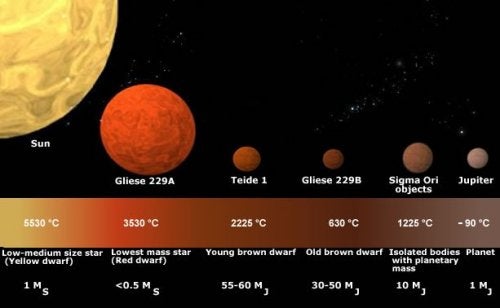The Wide-field Infrared Survey Explorer (WISE) mission is a NASA Medium-class Explorer satellite that will survey the entire sky in four infrared wavelengths between 3 and 25 microns. WISE’s primary scientific goals are to find the nearest stars to the Sun and the most luminous galaxies in the universe. Launching in November 2009, the WISE primary mission will last 6 months following a 1-month checkout phase.
The principal investigator is Professor Ned Wright of UCLA, and the Jet Propulsion Laboratory, a division of Caltech, manages the mission. WISE will find and catalog hundreds of millions of astronomical sources, from near-Earth asteroids to the most distant galaxies.
The WISE instrument consists of a 16-inch (40 centimeters) telescope that is cooled below -430° Fahrenheit (-257° Celsius) using solid hydrogen. WISE will image the entire sky using four infrared detectors operating at 3.3, 4.7, 12, and 23 microns, wavelengths that are approximately 10 to 30 times longer than the visible light our eyes see.
All-sky surveys are among the most useful tools for astronomers. They enable us to find the most unusual objects in the universe, such as the nearest stars or the most luminous galaxies, telling large telescopes like the upcoming James Webb Space Telescope where to point for detailed follow-up studies. For objects like nearby brown dwarfs, which should be uniformly distributed throughout space, a fast shallow survey will find more sources per unit time than a deep but narrow survey. And because they provide information on every object, the legacy of all-sky surveys endures for decades.
WISE’s infrared observations will probe the coolest, most distant, and dustiest parts of the universe. In particular, WISE has been optimized to observe some of the coolest objects known: brown dwarfs.
Brown dwarfs are stars that have too little mass to ignite thermonuclear fusion in their cores. They are born much like stars, but without fusion, they simply cool off, eventually fading from sight. Theory predicts that up to two-thirds of the stars in our solar neighborhood are actually brown dwarfs that have not yet been found. Among these may be the nearest star to our Sun, closer to us even than Alpha (α) Centauri 4.3 light-years away. This star may be an extremely cool, faint brown dwarf. WISE will be able to find a brown dwarf with a temperature of -100° F (-73° C) if it is closer than Alpha Centauri, and it will be able to find a Jupiter-mass object if it is closer to us than 1 light-year.
WISE will exploit brown dwarfs’ unusual atmospheres to find these dim, cold neighbors. Brown dwarfs are cool enough to form molecules such as methane, water vapor, and ammonia in their atmospheres. WISE will use two filters that are tuned to a methane absorption feature to find brown dwarfs. Unlike most stars or galaxies, brown dwarfs will appear dark in the WISE 3.3-micron filter due to methane absorption, but bright in the adjacent WISE 4.7-micron filter. This distinctive signature will allow WISE to find approximately 1,000 new brown dwarfs.
Currently, the spectral sequence OBAFGKMLT includes the L and T brown dwarf classes, spanning temperatures down to 620° F (327° C). WISE should find many brown dwarfs cooler than this; such objects will bridge the gap between stars and planets. It is possible that a new spectral class will have to be defined, provisionally designated Y. WISE should find many of these ultra-cool (yet currently hypothetical) Y dwarfs.











